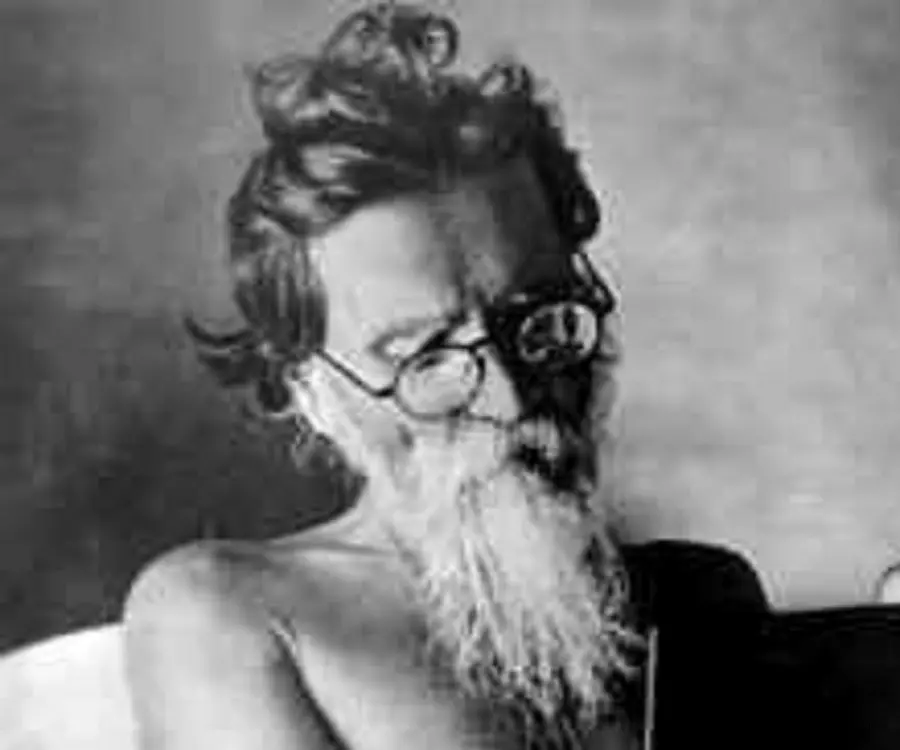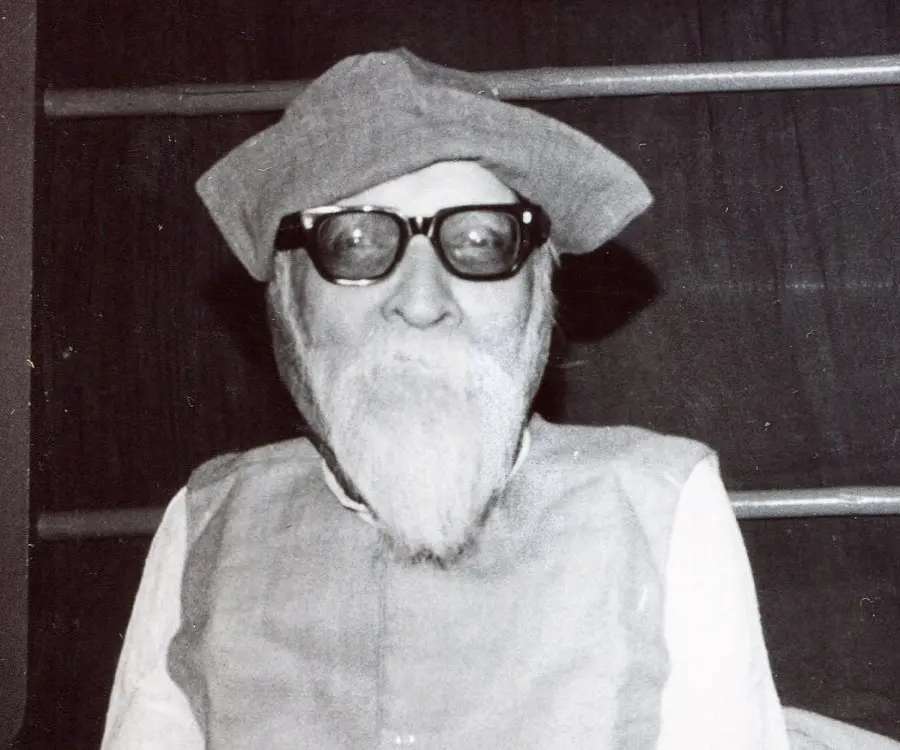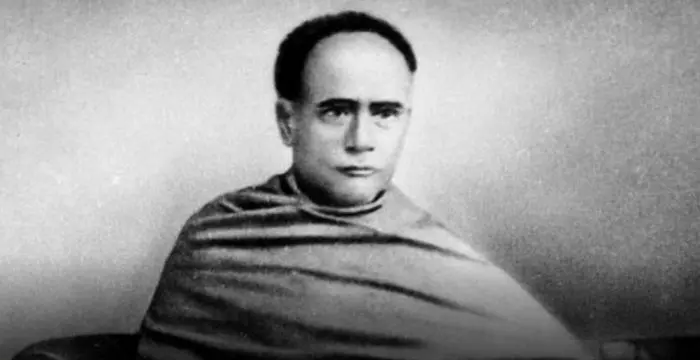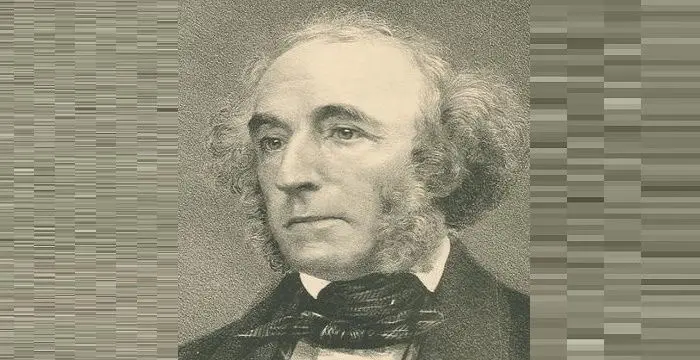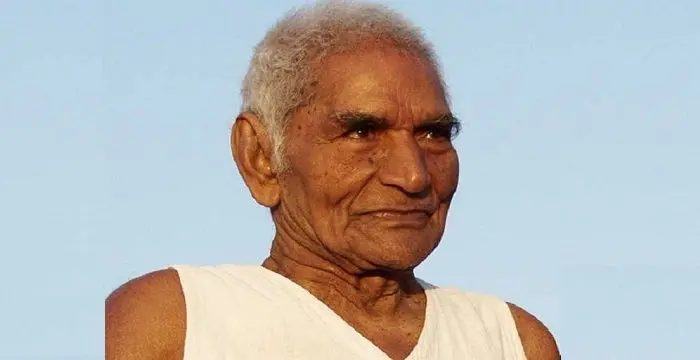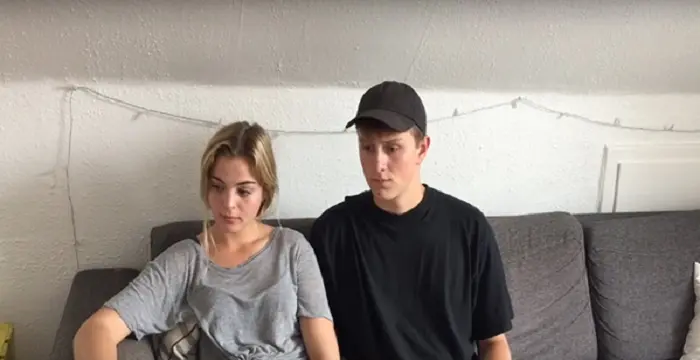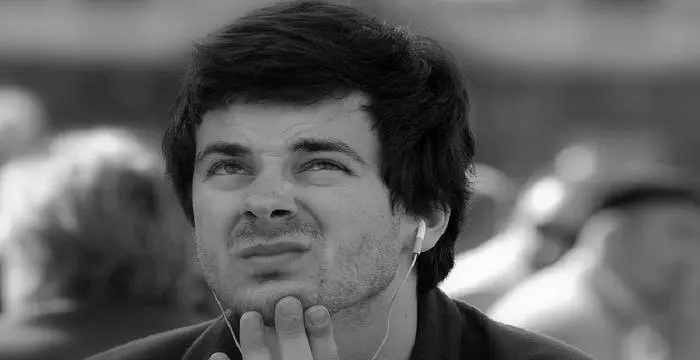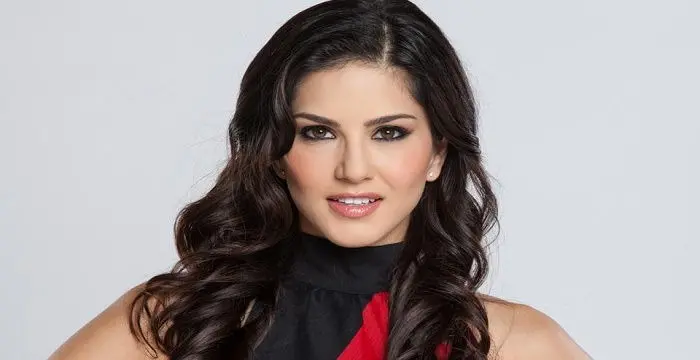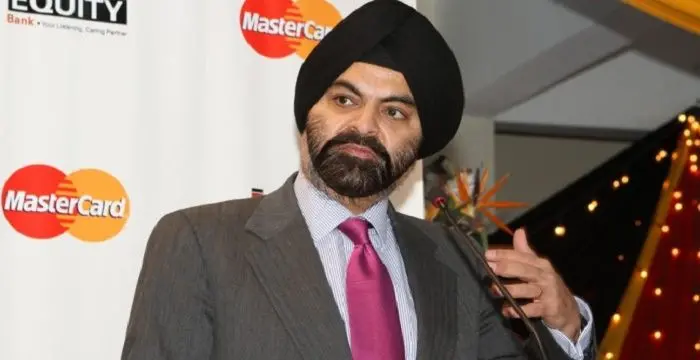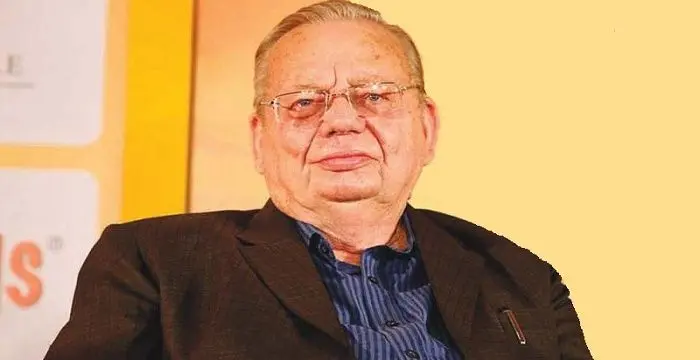
Vinoba Bhave - Social Reformers, Birthday and Personal Life
Vinoba Bhave's Personal Details
Vinoba Bhave was Gandhi’s spiritual successor and advocator of nonviolence and human rights
| Information | Detail |
|---|---|
| Birthday | September 11, 1895 |
| Died on | November 15, 1982 |
| Nationality | Indian |
| Famous | Miscellaneous, Social Reformers |
| Birth Place | Pen |
| Gender | Male |
| Father | Narahari Shambhu Rao |
| Mother | Rukmini Devi |
| Sun Sign | Virgo |
| Born in | Pen |
| Famous as | Social Reformer |
| Died at Age | 87 |
// Famous Miscellaneous
Jason Simpson
Jason Simpson is the son of former NFL running back, broadcaster and actor O. J. Simpson. Check out this biography to know about his childhood, family, life, and little known facts about him.
Melissa Brim
Melissa Brim is the ex-girlfriend of former professional boxer Floyd Mayweather Jr. Check out this biography to know about her birthday, childhood, family life, achievements and fun facts about her.
Joyce Meyer
Joyce Meyer is a Christian author and speaker. This biography provides detailed information about her childhood, life, achievements, works & timeline
Vinoba Bhave's photo
Who is Vinoba Bhave?
Vinoba Bhave was a spiritual successor of Mahatma Gandhi who all through his life advocated non-violence and human rights. He constantly fought against evil through non-violent measures and instilled in people a religious and spiritual outlook towards life. Interestingly, though Bhave gave up on the mundane daily life at an early stage to join Mahatama Gandhi in the struggle for India’s independence, he was not known in public until 1940. In 1940, Bhave was chosen by Gandhi as the first individual satyagrahi. The incident put the nation’s spotlight on Bhave who until then enjoyed an obscure religious and social work career. He introduced several programmes for the welfare of the people including his famous Bhoodan-Gramdan movement, through which he collected more than thousand acres of land. Bhave was a deeply learned and brilliantly endowed scholar and thus, is still considered as the National Teacher of India. For his involvement in the independence movement, he was jailed several times. Bhave used his imprisonment time for reading and writing. Several of his highly accomplished works were written during his jail terms. Bhave’s life was one of commitment where he yearned for the highest level of spirituality through human faith, love and respect. He committedly served people all through his life.
// Famous Social Reformers
Ishwar Chandra Vidyasagar
Ishwar Chandra Vidyasagar was an Indian polymath and a social reformer. This biography of Ishwar Chandra Vidyasagar provides detailed information about his childhood, life, achievements, works & timeline.
Granville Sharp
Granville Sharp was a social reformer and a leading British abolitionist. This biography of Granville Sharp provides detailed information about his childhood, life, achievements, works & timeline
Baba Amte
Baba Amte was an Indian social activist best remembered for his work for rehabilitation of leprosy patients. This biography of Baba Amte provides detailed information about his childhood, life, achievements, works & timeline.
Childhood & Early Life
Vinoba Bhave was born as Vinayaka (Vinoba) Rao Bhave on September 11, 1895 in Raigad, Maharashtra, to Narahari Shambhu Rao and Rukmini Devi.
He belonged to a Chitpavan Brahmin family and was the eldest of the five children born to the couple. His father was a trained weaver, while his mother a religious woman. She inspired and influenced the mind and life of young Bhave.
Academically brilliant, Bhave was well-read in the writings of Maharashtra's saints and philosophers and showed a deep-inclination towards mathematics.
An avid reader, he kept himself updated with the latest happenings and events. Gandhi’s speech at the inaugural ceremony of Benaras Hindu University caught the attention of young Bhave who became an ardent follower of Gandhi.
In 1916, with an aim to pursue further studies, Bhave journeyed to Bombay (now Mumbai) to appear for intermediate examinations. However, while on his way he put his school and college certificates to fire and took the fateful decision to reach Benaras in order to study ancient Sanskrit texts.
At the Benaras Hindu University, Bhave read a report in the newspaper about Gandhi’s speech. The speech greatly influenced Bhave and, he wrote a letter to Gandhi. After exchange of letters, Gandhi advised Bhave to meet him at Kochrab Ashram in Ahemdabad.
On June 7, 1916, Bhave met Gandhi. Such was the impact of the visit that it changed the future course of the life of Bhave. He, who wished to travel to Himalayas for inner peace and to Bengal to feel the burning fervour of resolution, found both peace and fervour in Gandhi.
Career
Abandoning his studies, Bhave settled at Gandhi’s ashram, where he indulged in teaching, studying and spinning. He also worked towards improving the quality of life of the people of the community.
Bhave actively participated in Gandhi’s constructive programmes by spreading awareness about the use of Khadi, settling up village industries, starting a new education system and upgrading the knowledge of people in sanitation and hygiene.
In 1921, he moved to Wardha where he took charge of the Ashram. Two years later, he published a monthly Marathi paper, Maharashtra Dharma, which contained essays on the Upanishads. The popularity of the newspaper grew and within a short span of time, it became a monthly and later a weekly. The newspaper lasted for three years. In 1925, upon Gandhi’s suggestion, Bhave moved to Vaikom, Kerala to oversee the entry of the Harijans to the temple.
During the decades of 1920s and 1930s, Bhave was arrested multiple times. However, he took his tenure in jail as a time for learning and writing. He scripted ‘Ishavasyavritti’ and ‘Sthitaprajna Darshan’ in addition to ‘Gitai’ and ‘Swarajya Shastra’. Also, he educated fellow prisoners about Bhagwad Gita. These speeches were later published in a book, ‘Talks on the Gita’ and translated in many languages.
Though Bhave actively participated in civil disobedience movement against the British, he was neither known publically nor was famous. It was in 1940 that Bhave came into prominence when Gandhi chose him to be the first individual Satyagrahi (an individual standing up for truth instead of collective action) against British rule.
Between 1940 and 1941, Bhave was jailed thrice at Nagpur jail. In 1942, Bhave took part in the Quit India movement and was imprisoned for three years at Vellore and Seoni jails. At Vellore jail, he mastered four South Indian languages and created the script for ‘Lok Nagari’.
In 1948, in a meet at Sevagram, Wardha, where Gandhi’s followers and constructive workers collaborated, the idea of Sarvodaya Samaj surfaced. Vinoba Bhave sought to find solutions for the problems faced by average Indian villager with a firm spiritual foundation.
Beginning 1950, Bhave launched several programmes in order to heal the wounds of partition. ‘Kanchan-mukti’ or freedom from dependence on gold or money, ‘Rishi-Kheti’ or cultivation without the use of bullocks as was practised by the sages during the ancient times, were amongst the various programmes initiated.
In 1951, Bhave ventured out for his peace trek through the region of current-day Telangana. When Bhave met the villagers at Pochampalli, little did he know that it would led to the start of a new chapter in non-violence movement.
Harijans of the Pochampally required 80 acres of land to make a living. When Bhave asked the villagers as to how to solve the problem, a landlord Ram Chandra Reddy offered help by donating 100 acres of land. The incident led to the start of a new movement ‘Bhoodan’ (land gift) to solve the problems of the landless.
Following the Pochampally episode, Bhave took the Bhoodan movement to other parts of the country such as Tamil Nadu, Kerala, Orissa, Bihar, Uttar Pradesh and so on. People contributed significantly to Bhoodan to the point that some gave all of their land to the villagers as Gramdan.
The success of Bhoodan let Bhave to start other programmes such as Sampatti-Dan (Gift of the Wealth), Shramdan (Gift of the Labour), Shanti Sena (Army for Peace), Sarvodaya-Patra (the pot where every household gives daily handful of grain) and Jeevandan (Gift of Life).
He initiated the Brahma Vidya Mandir, a community for women in Paunar, Maharashtra. The community aimed at helping women become self-sufficient and non-violent. Women of the group farmed for food, recited prayers, fervently read and practiced the teachings of Bhagwad Gita and so on.
Like Gandhi, Bhave knew the strength of ‘padayatra’ (march on foot). He walked for 13 years; he commenced on padyatra on September 12, 1951 and completed it on April 10, 1964 after having travelled entire India.
In 1965, he started Toofan Yatra (journeying with the speed of high velocity winds) using a vehicle. He completed the Toofan Yatra in 1969.
In 1969, he returned to Paunar. His quest for inner spiritual force led him to renounce his worldly activities. He observed a year of silence from December 25, 1974 to December 25, 1975. During this time, his spiritual pursuits intensified as he withdrew from the other activities.
Major Works
Bhave gave his life working on the path led by Gandhi, advocating non-violence and human rights all through. A learned scholar and a spiritual visionary, he continuously worked for creating a just and equitable society. Though Bhave worked all his life, he first came into prominence by being the first individual satyagarhi. In his lifetime, he initiated various movements for the betterment of the people but one such movement that gained considerable attention was Bhoodan-Gramdan. Through it, he helped millions of landless and helpless people to cultivate and prosper. He walked on foot for ten years, spreading the message of Bhoodan and in turn helping homeless. It is said that Bhave obtained more than 1000 villages through donation.
Awards & Achievements
In 1958, Bhave became the first person to receive the international Ramon Magsaysay Award for Community Leadership.
Posthumously, he was awarded India’s highest civilian award, Bharat Ratna, in 1983.
Personal Life & Legacy
Vinoba Bhave remained a Brahmachari all through his life. He had vowed for celibacy right in his adolescence and thus remained single all through.
Bhave spent the last days of his life at Brahma Vidya Mandir ashram in Paunar, Maharashtra. He breathed his last on November 15, 1982 after refusing food and medicine by accepting ‘Samadhi Maran’ / ‘Santhara’ as followed in Jainism.
Then Prime Minister of India, Indira Gandhi, who was visiting Moscow to attend the funeral of Soviet leader Leonid Brezhnev, cut short her visit to be at the funeral of Bhave.
Posthumously, he was bestowed with the country’s highest civilian award, Bharat Ratna in 1983.
A commemorative postage stamp on Acharya Vinoba Bhave was released by Government of India on November 15, 1983.
// Famous Virgo Celebrities peoples
Temple Grandin
Temple Grandin is a well-known American writer, autistic activist and animal expert. This biography profiles her childhood, life, achievements, career and timeline
Alex Holtti
Check out all that you wanted to know about Alex Holtti, the famous Danish Viner & YouTuber; his birthday, his family and personal life, his girlfriends, fun trivia facts and more.
Benjamin Atkinson
Benjamin Atkinson is the son of the world-renowned British actor and comedian, Rowan Atkinson. Check out this biography to know about his childhood, family, personal life, including his age, birthday, etc.
Vinoba Bhave's awards
| Year | Name | Award |
|---|---|---|
Other | ||
| 0 | Bharat Ratna | |
Vinoba Bhave biography timelines
- // 1000Bhave gave his life working on the path led by Gandhi, advocating non-violence and human rights all through. A learned scholar and a spiritual visionary, he continuously worked for creating a just and equitable society. Though Bhave worked all his life, he first came into prominence by being the first individual satyagarhi. In his lifetime, he initiated various movements for the betterment of the people but one such movement that gained considerable attention was Bhoodan-Gramdan. Through it, he helped millions of landless and helpless people to cultivate and prosper. He walked on foot for ten years, spreading the message of Bhoodan and in turn helping homeless. It is said that Bhave obtained more than 1000 villages through donation.
- // 11th Sep 1895Vinoba Bhave was born as Vinayaka (Vinoba) Rao Bhave on September 11, 1895 in Raigad, Maharashtra, to Narahari Shambhu Rao and Rukmini Devi.
- // 1916In 1916, with an aim to pursue further studies, Bhave journeyed to Bombay (now Mumbai) to appear for intermediate examinations. However, while on his way he put his school and college certificates to fire and took the fateful decision to reach Benaras in order to study ancient Sanskrit texts.
- // 7th Jun 1916On June 7, 1916, Bhave met Gandhi. Such was the impact of the visit that it changed the future course of the life of Bhave. He, who wished to travel to Himalayas for inner peace and to Bengal to feel the burning fervour of resolution, found both peace and fervour in Gandhi.
- // 1921 To 1925In 1921, he moved to Wardha where he took charge of the Ashram. Two years later, he published a monthly Marathi paper, Maharashtra Dharma, which contained essays on the Upanishads. The popularity of the newspaper grew and within a short span of time, it became a monthly and later a weekly. The newspaper lasted for three years. In 1925, upon Gandhi’s suggestion, Bhave moved to Vaikom, Kerala to oversee the entry of the Harijans to the temple.
- // 1940Though Bhave actively participated in civil disobedience movement against the British, he was neither known publically nor was famous. It was in 1940 that Bhave came into prominence when Gandhi chose him to be the first individual Satyagrahi (an individual standing up for truth instead of collective action) against British rule.
- // 1948In 1948, in a meet at Sevagram, Wardha, where Gandhi’s followers and constructive workers collaborated, the idea of Sarvodaya Samaj surfaced. Vinoba Bhave sought to find solutions for the problems faced by average Indian villager with a firm spiritual foundation.
- // 1950Beginning 1950, Bhave launched several programmes in order to heal the wounds of partition. ‘Kanchan-mukti’ or freedom from dependence on gold or money, ‘Rishi-Kheti’ or cultivation without the use of bullocks as was practised by the sages during the ancient times, were amongst the various programmes initiated.
- // 1951In 1951, Bhave ventured out for his peace trek through the region of current-day Telangana. When Bhave met the villagers at Pochampalli, little did he know that it would led to the start of a new chapter in non-violence movement.
- // 12th Sep 1951 To 10th Apr 1964Like Gandhi, Bhave knew the strength of ‘padayatra’ (march on foot). He walked for 13 years; he commenced on padyatra on September 12, 1951 and completed it on April 10, 1964 after having travelled entire India.
- // 1958In 1958, Bhave became the first person to receive the international Ramon Magsaysay Award for Community Leadership.
- // 1965 To 1969In 1965, he started Toofan Yatra (journeying with the speed of high velocity winds) using a vehicle. He completed the Toofan Yatra in 1969.
- // 15th Nov 1982Bhave spent the last days of his life at Brahma Vidya Mandir ashram in Paunar, Maharashtra. He breathed his last on November 15, 1982 after refusing food and medicine by accepting ‘Samadhi Maran’ / ‘Santhara’ as followed in Jainism.
- // 1983Posthumously, he was awarded India’s highest civilian award, Bharat Ratna, in 1983.
- // 1983Posthumously, he was bestowed with the country’s highest civilian award, Bharat Ratna in 1983.
- // 15th Nov 1983A commemorative postage stamp on Acharya Vinoba Bhave was released by Government of India on November 15, 1983.
// Famous Indian peoples
Sunny Leone
Sunny Leone is an actress and model. Check out this biography to know about her birthday, childhood, family life, achievements and fun facts about her.
Swami Vivekananda
Swami Vivekananda was the chief disciple of Sri Ramakrishna, and was responsible for awakening India spiritually. Check this biography to know in detail about his life, profile and timeline.
Ajaypal Banga
Ajaypal Banga is an Indian-American business executive who is the CEO of MasterCard. Check out this biography to know about his childhood, family life, achievements and fun facts about him.
Ruskin Bond
Ruskin Bond is an award winning Indian author of British descent. This biography of Ruskin Bond provides detailed information about his childhood, life, achievements, works & timeline.
Urmila Matondkar
Urmila Matondkar is an Indian film actress known for her films like ‘Rangeela’ and ‘Satya.’ Check out this biography to know about her childhood, family life, achievements and fun facts about her.
Ashoka
Ashoka was the third emperor of the Mauryan Dynasty and ruled almost the entire Indian subcontinent. This biography profiles his childhood, life, reign, achievements and timeline
Vinoba Bhave's FAQ
What is Vinoba Bhave birthday?
Vinoba Bhave was born at 1895-09-11
When was Vinoba Bhave died?
Vinoba Bhave was died at 1982-11-15
Which age was Vinoba Bhave died?
Vinoba Bhave was died at age 87
Where is Vinoba Bhave's birth place?
Vinoba Bhave was born in Pen
What is Vinoba Bhave nationalities?
Vinoba Bhave's nationalities is Indian
Who is Vinoba Bhave's father?
Vinoba Bhave's father is Narahari Shambhu Rao
Who is Vinoba Bhave's mother?
Vinoba Bhave's mother is Rukmini Devi
What is Vinoba Bhave's sun sign?
Vinoba Bhave is Virgo
How famous is Vinoba Bhave?
Vinoba Bhave is famouse as Social Reformer



